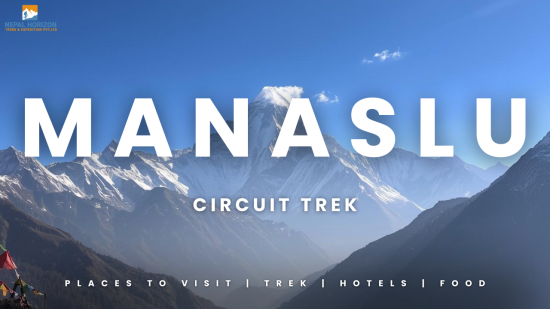Manaslu Circuit Trek Distance
25th January 2023

The Manaslu Circuit Trek in Nepal offers a more tranquil track compared to major treks like the Everest Base Camp Trek, Annapurna Base Camp Trek, and Annapurna Circuit Trek. The best way to experience Nepal's authentic isolation is through Manaslu Circuit Trekking. This hike provides hikers with attractive vistas of beautiful sceneries of diverse terrain, hills, swift rivers, exhilarating suspension bridges, and the captivating Himalayas. Through this voyage, you can also learn about distant lifestyles, religions, and a variety of traditions and cultures.
Manaslu Circuit Trek starts with the picturesque drive over the Middle Hill beyond Arughat to Soti Khola. As it ascends to the Philim, the Manaslu Tsum valley path crosses various mountains and charming hamlets. The trail then turns east and travels towards the Upper Tsum valley from here. In a limited growing season, barley, maize, buckwheat, and potatoes are farmed. A wonderful sighting of Tahars, Bharal blue sheep, and the elusive snow leopard may be seen.
Milarepa's cave and stone homes with slate roofs may be found throughout Chhekampar hamlet. Intriguing architectural features and in-depth knowledge of regional history and tradition may be found in the monasteries at Mu Gompa and Rachen Gompa. An important nunnery called Gumba Lungdang invites trekkers to stay the night and join the evening puja. The Kutang-Nupri valley, which was formerly a part of Tibet until the 1840s, is reached when we leave Lokpa and merge with the main Manalsu Circle trail. The trekking trail travels through a forest and offers breathtaking views of the Himal Chuli, Ngadi Chuli, and Manalsu mountains and their glaciers. We tour the Kargyu Chholing Monastery and Pungyen Nunnery in Sama Gaon.
Even though it was only made open to 400 trekkers at a time in 1992, this route nevertheless has the feel of a pioneering expedition. If you want to experience trekking in the 1980s, the Manaslu Circuit Trek is a visual feast from start to finish, but you better be in condition. Both people and yaks will be present along the route. There is just one rule of the road when approaching an oncoming yak: make sure to always walk to the side, toward the inner portion of the track, to avoid the cliff edge on the other side! They may be useful depending on your preference for using poles and whether you have knee problems. Although higher up, the wide slopes and moraine may provide you additional assurance with a pole. The trail is still very straightforward to follow.
Altitude Overview
This journey covers the high altitudes of the Manaslu region, traversing the heights of magnificent passes and a variety of sceneries. So, the Manaslu region itself ranges from subtropical Himalayan foothills at a height of roughly 1,000 meters to arid Trans-Himalayan high pastures bordering Tibet at a height of above 5,000 meters.
The Larkya La Pass, which is located at a height of 5,160 meters, is the highest point of this route. Even though it's a grueling climb to the top of the pass, the sights more than makeup for it. The pass offers views of Mt. Manaslu and the entire Manaslu range (8163 m). Peak 29 (7871 m), Himlung (7126 m), Cheo Himal (6812 m), and other peaks in the Lamjung Himal and Annapurna ranges may also be seen from the pass.
You travel by car to Soti Khola, which is barely 710 meters above sea level. From here, one can travel to Dharamsala through the following routes: Machha Khola (900 meters), Jagat (1,300 meters), Deng (2,095 meters), Namrung (2,900 meters), Samagaon (3,500 meters), and Samdo (3,690 meters) (4,450 meters). Bimthang (3,720 meters), Dharapani (1,860 meters), Larkya Base Camp (4,470 meters), Larkya La Pass (5,160 meters), and then back to Kathmandu. During your journey, you will generally ascend by 500 to 600 meters in altitude. Your climb from Deng, at 2,095 meters, to Namrung, at 2,900 meters, will offer the best chance. Numerous other hikes will experience significant altitude fluctuations as well.
Symptoms of Altitude Sickness
A person exhibits noticeable symptoms when their body is on the verge of developing altitude sickness. Headache, nauseousness, vomiting, and lightheadedness are the most typical symptoms that first manifest themselves. These symptoms may not appear for up to 12 to 24 hours following an altitude ascent. Not everyone will likely have the same symptoms, and symptoms can change depending on the person's body and the altitude. Coughing and a gray, pale, or bluish skin tone are other signs.
Prevention of Altitude Sickness
Acclimatization in the concept of trekking refers to adjusting to the local environment. Trekkers spend more time on their journeys so that their bodies can adjust to the climatic changes. If the body can't adjust, it will inevitably become ill. Knowing how much stress their body can withstand is also crucial. It is best to maintain a steady pace and rhythm that enable your body to operate normally and allow for atmospheric pressure adaptation.
Be sure to drink plenty of water. 5 liters of water should be consumed by a trekker every day. Similar to this, aim to always sleep at a lower altitude, no matter how high you rise. When sleeping, you should maintain an ascent of about 500–600 meters. Most people rush to finish their treks at high altitudes because they overestimate their stamina or become overexcited. Your body will feel pressure from this, which will make acclimatization very difficult. Therefore, avoiding altitude sickness is the best course of action
Best time for Manaslu circuit trek
The ideal times to travel to Manaslu are from March through May and from September through November. Due to the significant snowfall that occurs from December to February, Dharamsala's lodges are closed, making it difficult to traverse Larkya La Pass. Landslides and slips are risky during the wet season, which lasts from June through August. Therefore, we do not suggest anyone go trekking in the winter or during periods of heavy rain.
Spring Season (March to May)
Generally, the spring season is associated with fresh starts, just blooming blossoms, chilly weather, and a pleasant, fresh aroma in nature. The temperature starts out chilly and warms up as the day goes on. This time of year is when people are most likely to travel. There are gorgeous mountain panoramas to be observed. The scenery is brand-new, the paths are all good, and the temperature is comfortable. The temperature isn't extremely hot at lower elevations, and it's not particularly cold at higher elevations. Excellent mountain views can be seen from the hike. You can take in the most magnificent aspects of nature. The landscape around you looks lush and gorgeous, with all the flowers' budding buds and the green pigments on the trees' leaves. If you're traveling somewhere with a higher elevation, like the Everest Base Camp Trek or the Annapurna Base Camp Trek, etc., now is the best time to schedule your trip.
Monsoon Season ( June to August)
Traveling during this time will make your walk much more exciting, offer you some breathtaking views, and allow you access to unique natural phenomena that are only present at higher elevations during monsoon season. During the monsoon season, you must work and travel while it is raining. The monsoon season is a risky time to travel because of the rain, which can make the trail slick and raise the possibility of landslides and floods. You can appreciate nature's damp and chilly features because of the weather's moderate humidity. This month is for you if you prefer rain, rainbows, and less crowded trails. Due to the ongoing rain, the air starts to become increasingly humid throughout this month.Due to the chilly weather, you must be prepared to stay warm at a greater altitude. As the monsoon season is just beginning, you will run into a few adventurers while climbing Manaslu.
Autumn Season (September to November)
The major travel time of year in Nepal is in the fall. Right now, the weather is great for travel and trip preparation in Nepal. Because of the clear, brilliant sky and pleasant weather, this season is excellent for travel at both higher and lower altitudes. At this time, you will also get the chance to learn more about Nepali traditions and culture and participate in the nation's greatest festival with the locals. The streets are congested with locals, tourists, and foreign guests. The sky is clear and sunny. The present is the ideal season for hiking and trekking in the high Himalayas. All around you, breathtaking vistas of the summit covered in snow will be visible.
Winter Season (December to February)
During the winter, the Manaslu Circuit trip has clear skies and dry weather. The weather is often warm during the day, but when the sun sets, the temperature rapidly lowers. As a result, the temperature might easily drop to -20oC during the night and early morning. The skies are typically clear, despite the fact that it is extremely cold outside at the beginning of the month. You'll see that the routes are covered with snow, so using crampons to traverse the pass might be necessary. Around mid-December, people from Samdo village usually move to Pokhara to escape the cold. As a result, most of the teahouses are closed, and there are just a few people left to maintain the settlement.
Recent From Blogs
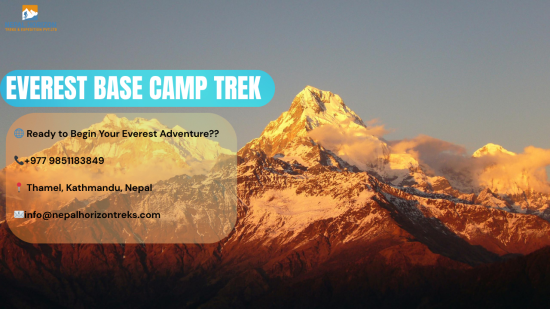
28th October 2025
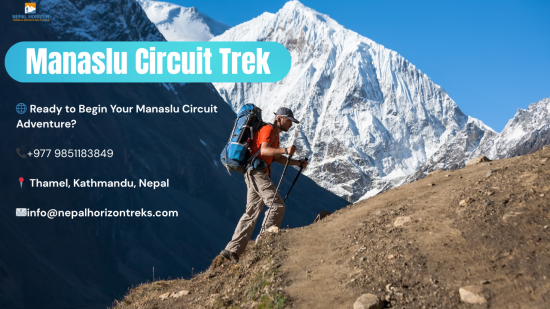
25th October 2025
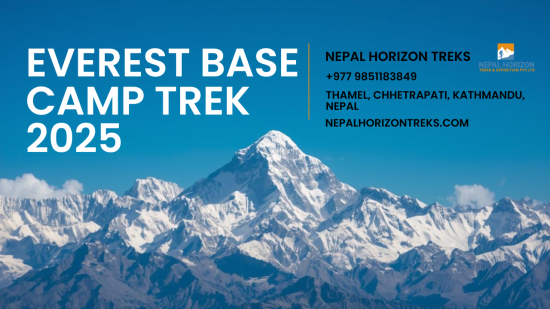
24th October 2025
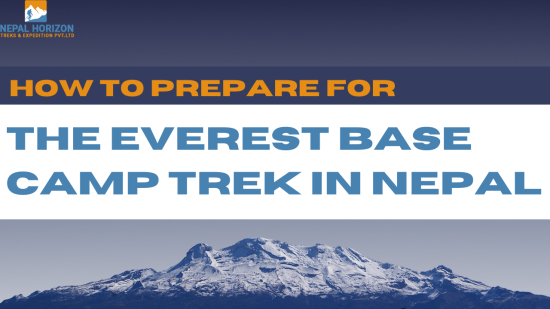
18th October 2025
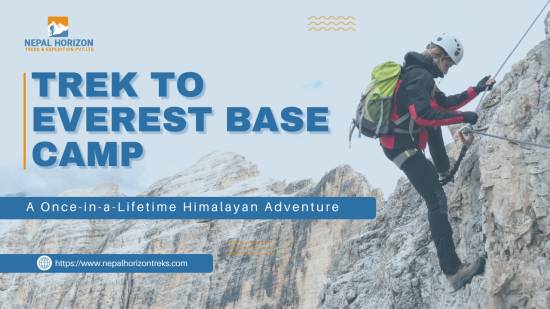
14th October 2025

12th October 2025

10th October 2025

7th October 2025


